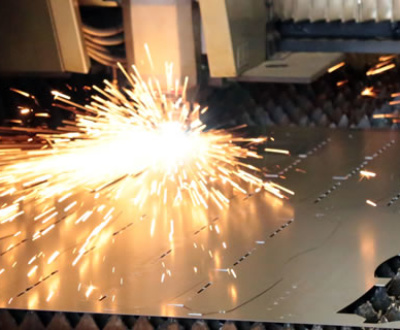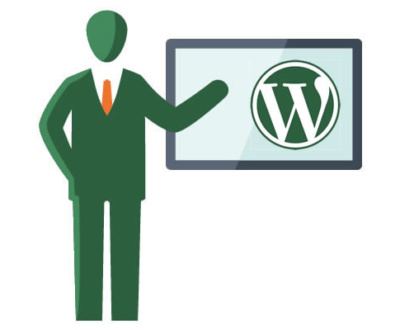So much has changed, and is changing, on the World Wide Web, that it’s more important than ever to make sure your web presence is up to snuff and future-proof.
With that in mind, we give you: the Top 5 Must Haves for a Modern Website!
1. Content Refresh
Today’s websites need the ability to have content updates on a regular basis.
This not only helps with search engines (they LOVE fresh content), but also keeps the site fresh and interesting for those pesky human visitors as well!
Most new sites are built on some kind of Content Management System (CMS) which makes it much easier for website owners to keep their content renewed and relevant.
Any modern website needs a way for the owner to log in, change content, and render that content on the website to keep things fresh and lively for search engines and visitors!
2. No Flash?!
OK, we’re really torn about this one. Bottom line: Flash won’t work on all devices that use the internet. How important is it for your site to work on mobile phones, many of which won’t play any Flash content?
Then there’s the problem with searchability. While Flash has gotten better at making some text objects index-able by search engines, any content created in Flash will have a built-in handicap compared to SEO-ready HTML.
Hmm – poor mobile support. Bad SEO. So that’s two strikes! Is there a third?
Yes. HTML5.
With the introduction of HTML5 support in all major browsers, the last real argument for really ever using Flash for a typical website evaporated. HTML5 lets us do remarkable things visually, all with properly marked up HTML that can still be indexed by search engines, and is supported on all mobile device platforms.
But make no mistake: Flash is not yet dead. There will always be boutique websites doing visually radically advanced things with Flash, and for those websites, maybe phone browsers aren’t a priority anyway. But any business who wants to tap into that all important mobile browser market needs to avoid Flash content on their websites.
3. Pure CSS
No more table layouts, guys. No more embedded color coding, ladies. Separating content from styling has given us too many benefits to name them all. But here are the big ones:
- Accessibility – embedding style information within HTML often made webpages unreadable by screen readers and other devices to assist the visually or physically challenged.
- Mass style updates are possible with CSS. You have hundreds of pages that use black text and you want to change it to grey text. If you have a style sheet telling all those pages to be black or grey, you only have one value to change to impact your entire website.
- Intelligent website rendering based on screen resolution using CSS3.
This last one cannot be overstated. In fact, it gets it’s own number in our Top 5
4. Responsive Layouts
It isn’t enough anymore to build a website for a person with a 2048 pixel monitor on their desktop. As we all know, the modern world is giving us a plethora of different device types on which to navigate the web.
What is a web designer to do?
This is really where the power of CSS and HTML5 shines through. Every browser in the modern world can report it’s “stats” to a website. Colorado Web Design and many other designers are now working exclusively with intelligent, conditionally displayed code. If you are on a nice, wide monitor, you see a typical website, around 1200 pixels wide. But if you are on your phone, we don’t have the luxury of that kind of real estate. Instead the website will smartly “fold in on itself”, condensing the layout into a narrow 1-column design, with the company logo at the top, all navigation intact, but rendered in a dramatically different way to maximize the experience on the phone.
This is where the web is heading. Your website needs to render adequately anywhere, on any device, without causing your visitor any grief that might steer them away. Responsive layouts get us there with style and efficiency.
 5. Smart Social Interaction
5. Smart Social Interaction
This last one is a huge category that can mean many things to different people.
What we mean by this one is partly the basics like linking to your Facebook pages or Twitter accounts, but it’s also about how engaged you and your website really are with the modern web.
Visitors like to engage with their websites, through modules like user comments, product ratings, or user forums, users feel more connected to a website and it’s wares.
When the site is designed to be as interactive as possible, it gives visitors a reason to stick around and consume more content, and it gives them reasons to return later.
There are numerous interactive examples, but a list of effective ones includes:
- Contact Form – let users submit a customized form of information to you – no more simple phone and email address on contact pages.
- Wish Lists – if you have an online store with no wish list functionality, experts estimate you are losing up to 30% additional revenue. Wish lists can be fun and akin to layaway in the minds of users.
- Blog Comments – don’t be frightened away by all the Blog Comments spam horror stories. Modern websites have a number of ways to thwart dishonest comment spammers running bots to add fake comments. Engaging your visitors by letting them add comments creates a terrific experience.
- Relevant RSS feeds – this can be feeds you are taking from other external locations to bulk up your content, or even feeds you are offering to your visitors to let them stay up to date on your content refreshes. It’s powerful, mature technology.
So there is the list. I’m sure I missed a few, or some of you may even think these are not the Top 5, but let’s let the panel decide below. What do you think are the absolute MUST HAVES for a modern website?
Bill lives and plays in Fort Collins, Colorado. After a fulfilling career for a Fortune 50 company, Bill founded Colorado Web Design in 2012 with a passion for creative digital solutions for business. Bill likes to manage a wide variety of projects and tasks for his clients in the digital space. The creative elements of website design, application design, and marketing are enough to keep anyone busy and engaged, but wiping the slate clean over and over at the start of new projects comes with its own challenges. "I like to start with really good client communication sessions. The rest is easy if you get started in the right way." He plays tennis, bikes, and hikes and then undoes all of that with too much delicious food and TV watching.
About Colorado Web Design
We've been building websites for Colorado businesses since 2002. We are a small team of dedicated individuals who love the challenge of each new marketing project. We live and play in northern Colorado.





 5. Smart Social Interaction
5. Smart Social Interaction






